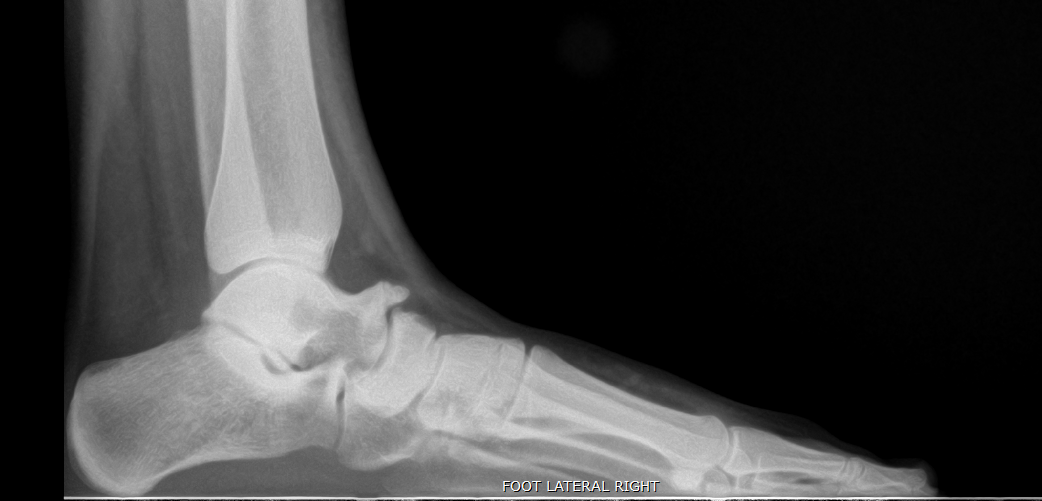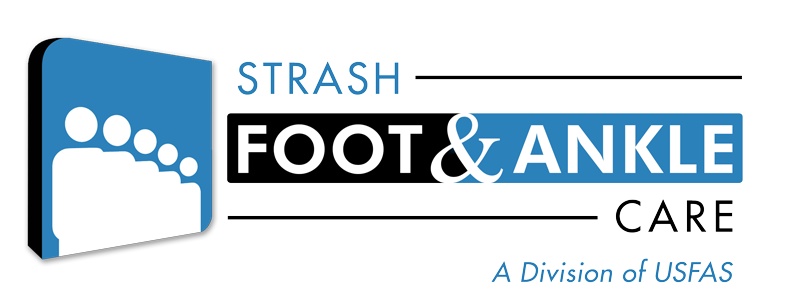
01 Nov What is a Tarsal Coalition?
You may have never heard of a tarsal coalition, but if you have flat feet, there’s a one in four chance that you have one. In fact 3% to 5% of the whole population has a tarsal coalition.
The bones in the back of the foot and in the midfoot are called the tarsal bones. When there is an abnormal fusion or connection between two or more of these bones, it is called a coalition.
As you can imagine, this greatly stiffens the joint, limiting the range of motion of the foot.The reason we have joints in the foot is to accommodate the motion of walking, and to absorb the forces the ground places on the foot. A tarsal coalition can force the foot into an alignment outside of what would be considered a normal position. If you’ve ever seen a tire that has rolled for thousands of miles while out of alignment, you would begin to easily understand how the foot can wear out when it too is diagnosed out of alignment with the leg. A joint that it’s fused out of alignment can have a profound effect on the tissues surrounding the joint, as well as on the neighboring joints.
Where are the tarsal bones?
In the back of the foot there are four bones that make up the tarsal bones. These bones as listed from the back of the foot to the front are the calcaneus, talus, cuboid, and navicular. The cuboid and navicular sit nearly side by side. Most of us refer to the calcaneus as the heel bone.Hits the ground with every step. As the forces go through the heel into the foot, the foot captures these forces in the joint between the calcaneus and the talus.The motions within this joint soften the blow to prevent excessive stresses going through the foot. The cushioning of the forces is called pronation, which many of us have heard of as we go to buy shoes. The most common coalition occurs in this joint called the subtalar joint. The next most common coalition is between the calcaneus and the navicular, which is often referred to as a CN bar. If the pronation is fixed in place, there is no reduction of the ground forces through these joints, and then the body has to compensate and use other other means to reduce those forces.
What are the symptoms of a tarsal coalition? When do they occur?
Even though most children with tarsal coalitions are born with them, painful symptoms typically set in sometime between the ages of 8 and 16. During late childhood and early adolescence children’s bones change from mostly cartilage to mostly bone (a process known as ossifying). During this period, the hardening (calcifying) tarsal coalition grows more rigid and painful. Sometimes symptoms don’t flare up until early adulthood.
While each child may experience symptoms differently, the most common symptoms of a tarsal coalition include:
pain, typically on the outside of the foot
flat feet or a flat foot
rigidity and stiffness in the heel
muscle spasms
What if tarsal coalition goes untreated?
If all tarsal coalitions caused pain, then theoretically, millions of people would not be able to function. Many tarsal coalitions go unnoticed for a person’s entire lifetime. Often children will experience symptoms that they cannot describe. If the tarsal coalition gets bad enough, they may not be able to enjoy doing activities like running, playing, or even walking. Overtime, a coalition can cause joints and tissues in neighboring areas of the foot to degenerate.
Who’s at risk for developing tarsal coalition?
Most coalitions are a genetic mutation which cannot be detected, but cause the foot to develop with the joint that is stiff. If you think about the incidence of coalitions in the general population, which we presented in the first paragraph, there are an estimated 10-15 million people in the US with tarsal coalitions. Adults who have had trauma, or infections in their joints, can develop what is called end stage arthritis which can transform into a coalition or ankylosis. Children on the other hand, come into this world and are born with their coalitions.
How do you treat a tarsal coalition?
Most tarsal coalitions respond very well to conservative treatments. Many times, supporting the foot with a custom orthotic to more evenly distribute the forces throughout can alleviate most of a child’s pain. Sometimes medications such as anti inflammatories or steroid injections can be beneficial to help alleviate the inflammation in the tissue. Casting is occasionally used to reduce the motion in the foot for a time to allow the foot to calm down. At times, surgery is necessary. When surgery is recommended, you can trust the doctors at Strash Foot And Ankle Care who are board certified by the American Board of Foot and Ankle Surgeons.

